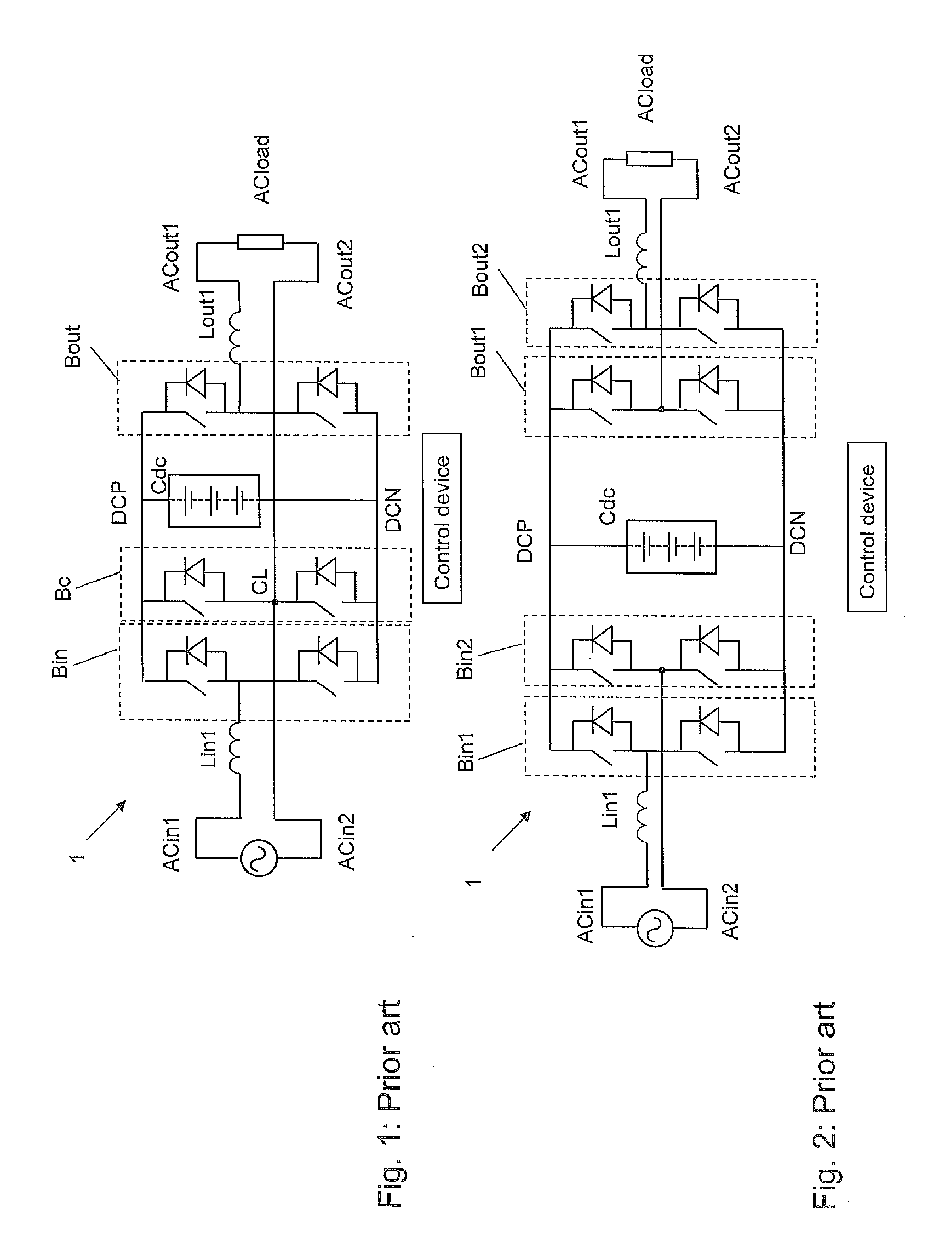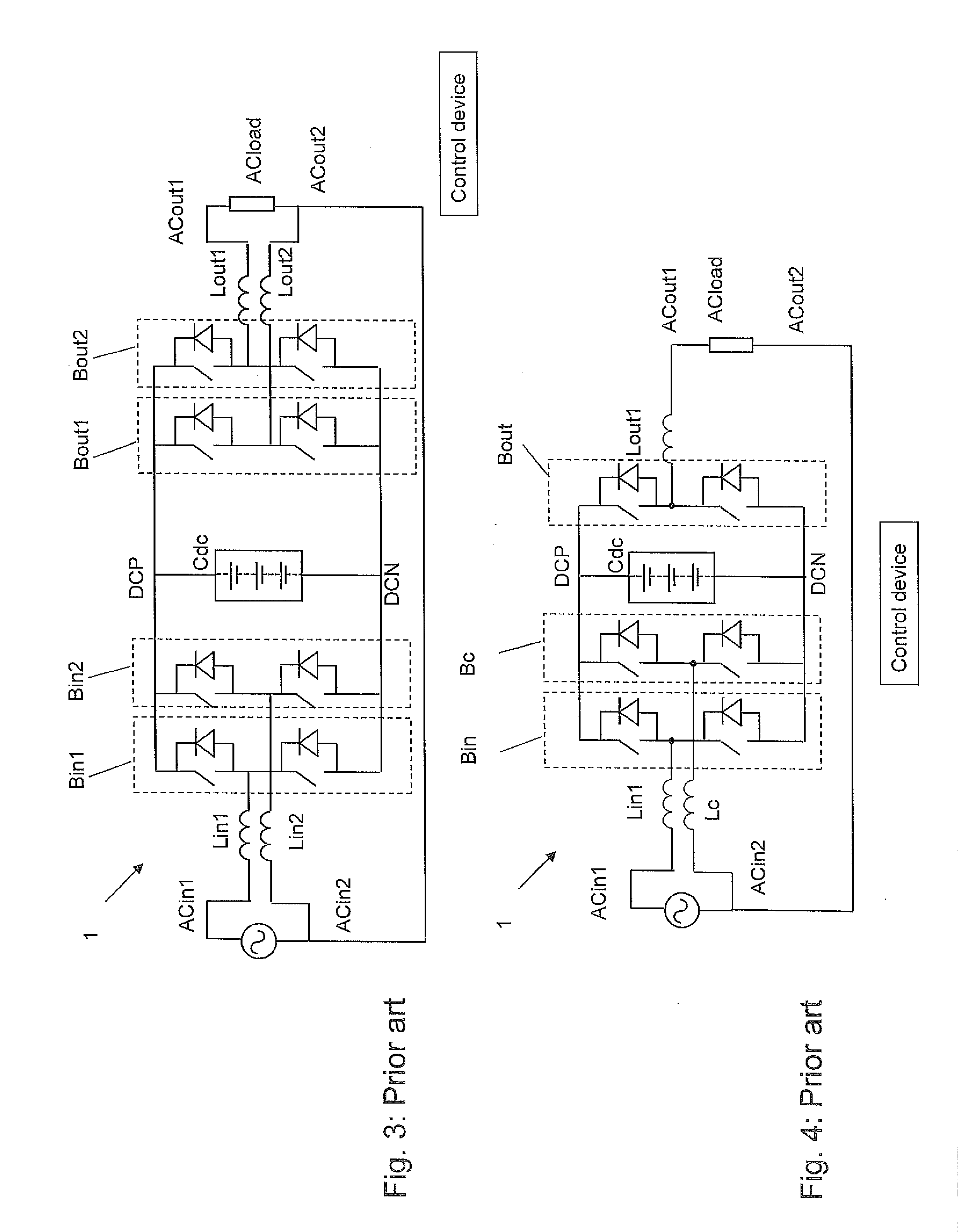Ac-ac converter device
a converter device and converter technology, applied in the direction of ac-ac conversion, power conversion systems, electrical equipment, etc., can solve the problems of excessive switching losses and complex circuits
- Summary
- Abstract
- Description
- Claims
- Application Information
AI Technical Summary
Benefits of technology
Problems solved by technology
Method used
Image
Examples
first embodiment
[0052]Alternatives of the bidirectional switch BS will now be described. In the first embodiment shown in FIG. 7 and in FIG. 8a, the bidirectional switch BS includes a first BS switch S1 and a second BS switch S2, each including control terminals GS1, GS2 connected to the control circuit. A drain terminal DS1 of the first BS switch S1 is connected to the first node 11, a drain terminal DS2 of the second BS switch S2 is connected to the third node 22, and a source terminal SS1 of the first BS switch S1 is connected to a source terminal SS2 of the second BS switch S2.
second embodiment
[0053]In a second embodiment shown in FIG. 8b, the bidirectional switch BS also includes a first BS switch S1 and a second BS switch S2. Here, a source terminal SS1 of the first BS switch S1 is connected to the first node 11, a source terminal SS2 of the second BS switch S2 is connected to the third node 22, and a drain terminal DS1 of the first BS switch S1 is connected to a drain terminal DS2 of the second BS switch S2.
third embodiment
[0054]In a third embodiment shown in FIG. 8c, the bidirectional switch BS includes a first BS switch Si and switch diodes DBS1, DBS2, DBS3, DBS4. Here, a drain terminal DS1 of the first BS switch S1 is connected to an anode of a first switch diode DBS1 and to an anode of a second switch diode DBS2. A source terminal SS1 of the first BS switch S1 is connected to a cathode of a third switch diode DBS3 and to a cathode of a fourth switch diode DBS4. A cathode of the first switch diode DBS1 and an anode of the third switch diode DBS3 is connected to the first node 11. A cathode of the second switch diode DBS2 and an anode of the fourth switch diode DBS4 is connected to the second node 22. A control terminal GS1 of the first BS switch S1 is connected to the control circuit.
[0055]In the description above, the common switches Sc1, Sc2 and the output switches Sout1, Sout2 are MOSFET switches or IGBT switches with an antiparallel diode. Preferably, the switches are silicon carbide MOSFETs or...
PUM
 Login to View More
Login to View More Abstract
Description
Claims
Application Information
 Login to View More
Login to View More - R&D
- Intellectual Property
- Life Sciences
- Materials
- Tech Scout
- Unparalleled Data Quality
- Higher Quality Content
- 60% Fewer Hallucinations
Browse by: Latest US Patents, China's latest patents, Technical Efficacy Thesaurus, Application Domain, Technology Topic, Popular Technical Reports.
© 2025 PatSnap. All rights reserved.Legal|Privacy policy|Modern Slavery Act Transparency Statement|Sitemap|About US| Contact US: help@patsnap.com



